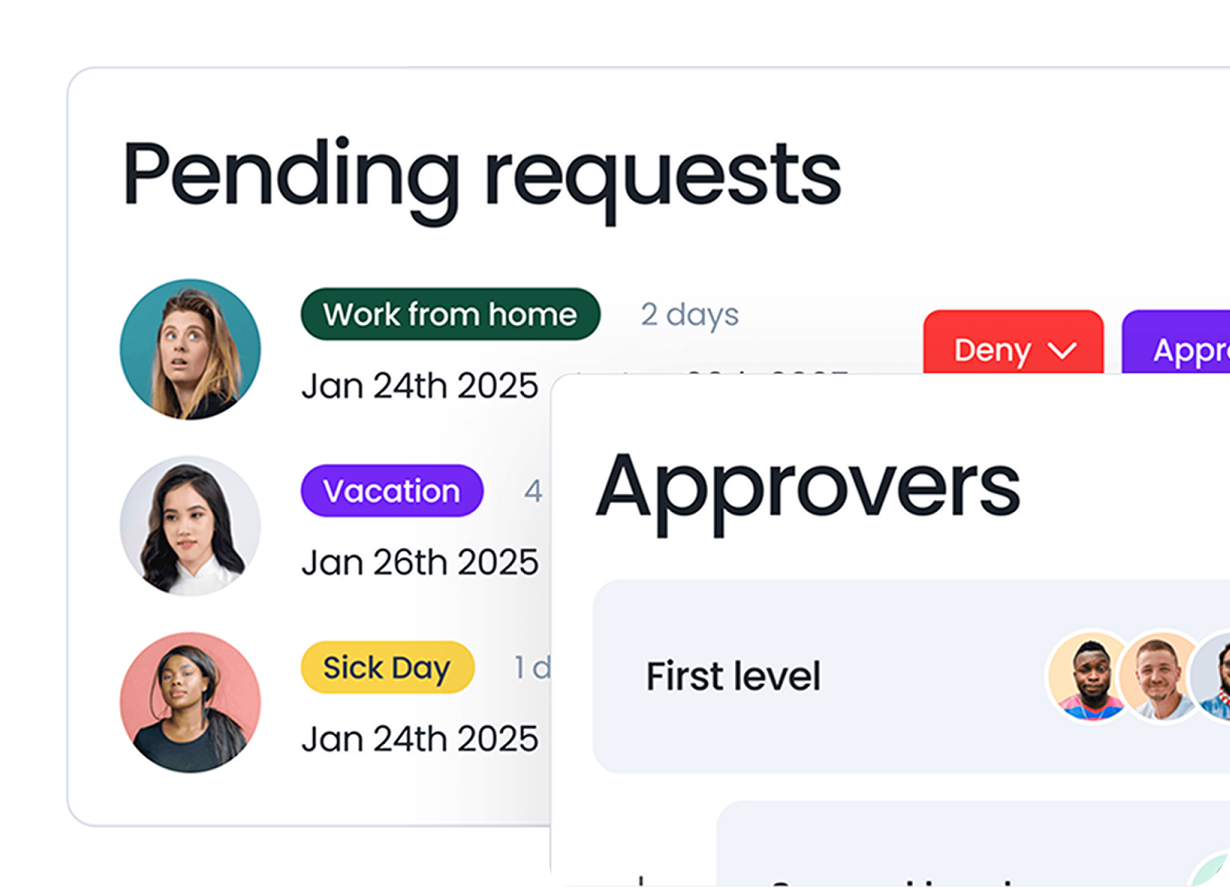Last updated on July 18, 2025
Ever wished for greater flexibility while taking time off? Well, then you better thank your lucky stars — because it’s now quickly becoming a reality. More and more companies worldwide are now offering a flexible time off policy to their employees.
But what exactly does this type of time-off policy entail? And how exactly does it work? We’re here to break it all down for you.
What is Flexible Time Off (FTO)?
To put it simply, flexible time off is like a vacation with no strings attached—you can take time off for however long is necessary, whenever you need it.
A flexible time off policy aims to offer employees a greater amount of flexibility with regard to their time off from work. In essence, it is a company benefit that gives employees time off to do whatever they want.
This added flexibility in your schedule means that you can use it as a sick day, to take a vacation, a day off to catch up on chores, or even to stay at home and binge-watch The Office on your couch with some Chinese takeout.
You have full control of your time off.
While it may sound like it, FTO is not an unlimited PTO policy. Some organizations can decide to provide unlimited leave, while others offer a set number of FTO days employees can use each month or year as they choose. The specific implementation depends on the needs, size, and location of your company.
FTO vs PTO: What’s the Difference?
Flexible time off and regular paid time off policies differ in two major ways: the way they’re accumulated and the way they are organized. Here’s a little more detail:
Accruals
FTO polies offer employees all their PTO at once without having to earn or accrue any of it.
PTO policies require employees to accrue time off through hours or days worked.
Structure
FTO is not classified into individual types of PTO, but rather is one category of paid time off for sick days, bereavement, holidays. For example, employees will have 20 FTO days per year to use however they please.
PTO provides specific quotas for different types of leaves. For example, employees might get 2 bereavement days, 5 sick days, and 10 vacation days.
Benefits of Flexible Time Off for Employees and Employers
Increased Employee Satisfaction and Retention
Flexible working solutions and a healthy work life balance are becoming more and more important for employees and have a major impact on their happiness at work.
Interestingly enough, research shows that 83% of employees with flexible benefits have a positive view of their company’s culture. Culture is an essential component of retention, with 90% of employees who view their culture as poor having contemplated quitting (shrm).
It seems that giving employees the freedom and autonomy required to manage their PTO as needed helps cultivate a trusting work environment where employees feel respected.
Employees don’t feel the need to explain why they need time off or what they’re using it for. Even better, long gone are the days when people feel the need to lie about why they’re taking time off, aka the famous fake cough ahead of the long weekend.
Instead, employees are welcome to take their days off for whatever they need––vacation, mental health days, or just because. This creates a positive relationship between them and their employer, resulting in a happy team and stellar retention rates.
Reducing Burnout with FTO
Burnout is a serious issue that is becoming increasingly more prominent in the workplace. a 2024 study by SHRM shows that 44% of employees have experienced this.
The constant pressure to perform, meet deadlines, and stay connected can leave employees feeling exhausted and disengaged. FTO helps combat this by giving employees the autonomy to step away from work when they need it most, without the burden of justifying their time off or worrying about accrual limits.
Taking breaks for work, to rest and rejuvenate, helps employees be more productive when they are on the clock. FTO policies provide employees with more work-life balance, allowing them to take time off to care for themselves, guilt-free.
Attracting Top Talent with a Flexible Time Off Policy
Adopting flexible time off policies has often been observed in workplaces that take a more forward-thinking, innovative approach to work, including major tech companies worldwide, with Facebook and LinkedIn being one of the many early adopters of it.
As the job market grows in competitiveness, progressive policies like FTO are great ways to align yourself with some remarkable companies and attract the types of candidates your team needs to thrive. Top talents will likely have several companies offering them employment and the appeal of flexible benefits like work from home, flex time, and FTO can help you stand out, amongst other things, we’re sure. 😉
How to Implement FTO in Your Organization
Assess Organizational Readiness
The first step in implementing an FTO policy is assessing if this benefit is the right fit for your team.
Consider the following:
Employee Demand: Has your team requested or expressed interest in this benefit? Would they enjoy greater flexibility in their time off?
Financial Impact: Can your company afford to implement FTO, or could it help you save on costs in the long run?
Policy Transition: What would transitioning from your current PTO policy to an FTO policy entail?
Accrued PTO: Analyze how much PTO your employees have already accrued. How would you compensate them for this time when making the transition to FTO?
Legal Compliance: Review local and federal leave laws. Will switching to an FTO policy affect your company’s compliance?
If you've considered all these options and decided that an FTO policy is right for you, then you’re ready to make the swap!
Create and Communicate a Clear Leave Policy
To implement a flexible leave policy, you’ll need to build out a document with all the information your team will require.
A clear, written leave policy must outline how many days everyone gets, if there is a minimum number of days off, also called a mandatory PTO policy, and how leaves will be requested and managed.
You’ll want to ensure you build out procedures to ensure there are no workflow disruptions when employees take leave and outline any limitations, like the number of consecutive days off or days of notice required.
Share this document with your staff, ensure to incorporate these policies in employment contracts and onboarding documents to keep new and veteran employees in the know.
Ensure employees understand the new leave policy by conducting meetings and allowing them the opportunity to ask questions.
Use a Leave Management Solution
Now that you’ve promised your team an easier and more accommodating time off policy, you need to ensure it’s carried out correctly. A leave management software makes it easy to request, approve, and manage your team’s time-off from the comfort of your workspace.
Vacation Tracker makes it super simple for employees to see their PTO balances and make requests straight from software like Teams or Slack. Management enjoys a bird's-eye view of the team’s PTO to make sure the policy is being applied fairly and there are no conflicts.
![]()
Our users can customize our tool to fit into the way they work. This includes creating multiple locations and setting up different leave types and policies. Plus, the online dashboard lets you export reports, integrate with your favorite calendar, get notifications, and so much more!
![]()
Want to see it in action? Request a demo now!
Tracking Can Be
Learn how to manage time off without
confusion, delays, or admin headaches.

Monitor and Adjust
Implementing a policy is just the first step! You’ll need to continuously monitor its effectiveness and adjust it based on employee feedback and the needs of your organization. It’s possible that employees will require more clarification or have questions that will lead to policy revisions and updates.
Even after you feel you’ve gotten it right, it’s important to continuously monitor how employees are using the policy. Using the Reports feature in Vacation Tracker, admins can quickly export leave balance and leave request data, and even segment it by location, department, or label. This helps to quickly compare how the new policy has impacted the amount of time off your team is taking.
![]()
Is FTO Right for Your Organization?
Ultimately, setting up flexible time off policies seems to be a win-win for employers and employees alike. Employers benefit by keeping their people motivated, engaged and happy. On the other hand, employees benefit from the freedom to take time off on their own terms.
In the end, flexible time off is a new and exciting concept in the modern workplace. There are plenty of reasons to give this kind of policy a try, so what are you waiting for?
Do you need some support managing this new policy and ensuring your company is compliant? We’re here to help!
Tacking and automating your organization’s leave management is ridiculously easy with Vacation Tracker. It's no wonder that over 2,500 companies trust us to streamline their leave tracking.
![]()
No need to commit just yet–. All our plans also come with a 7-day trial. This way, you can take our tool for a test drive before making your decision to purchase.
Try it now!

Claudia
Claudia is an experienced marketer with a passion for writing and creating engaging content that connects with readers.




